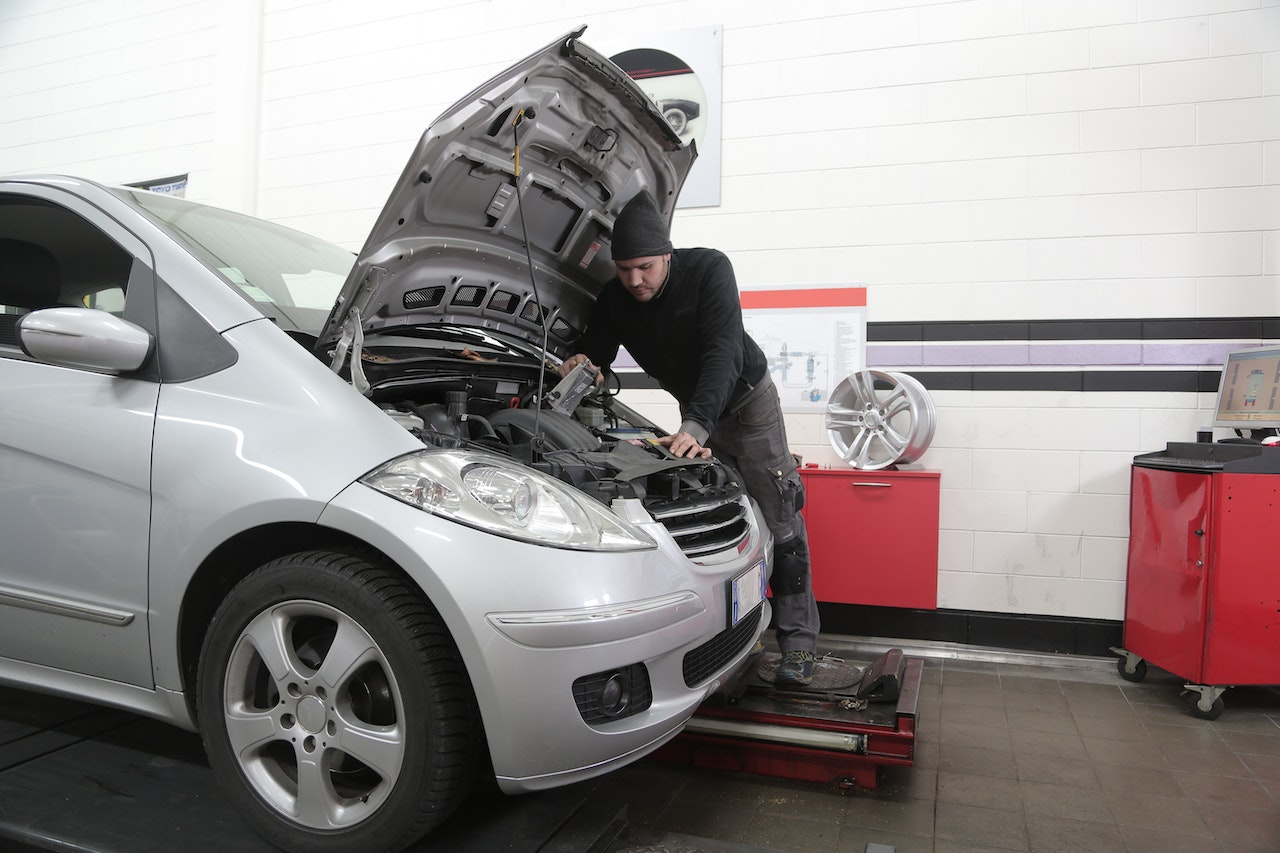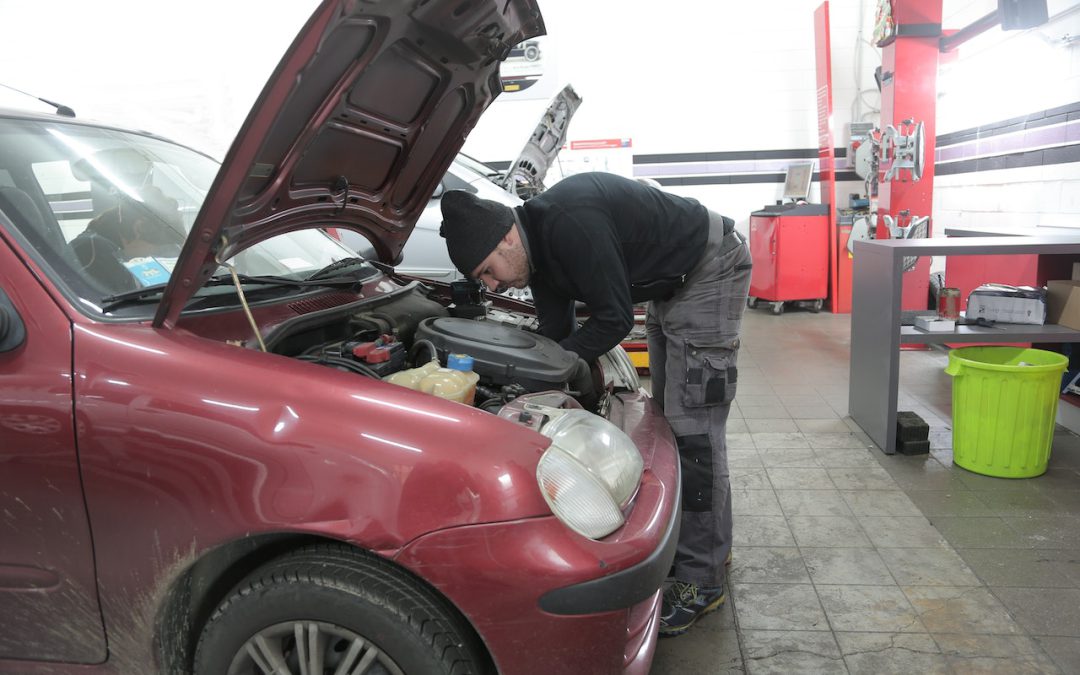Don’t let your busted radiator fan be the hidden reason for mysterious car overheating! This can occur even when you’re sure your coolant and thermostat are functioning as they should. When this fan fails and stops spinning, hot air remains trapped in the radiator.
This, in turn, causes your engine to overheat faster when driving at low speeds or when idling in stop-and-go traffic. Maybe you’ve seen the temp gauge rising or found a lot more steam coming from under the hood after a quick trip. Other times, it’s simply that you notice the fan is either running extremely loud or, in some cases, not at all, which can be a big giveaway.
If you continue to operate the vehicle in this condition, the engine will overheat causing more extensive repairs. In the second half, I share powerful tactics to identify all these warning signs early. I break down what should be checked first to stop the issue from getting worse.
Key Takeaways
- Recognizing early signs of engine overheating, such as rising temperature gauges or unusual noises, helps you prevent serious vehicle damage and costly repairs.
- Inspect your radiator fan and cooling system components on a routine basis. All of this ensures that your engine temperature is consistently maintained and protects you from sudden, surprise breakdowns.
- Addressing radiator fan problems like blades that don’t spin, blown fuses or unusual sounds is key. This is good practice to avoid overheating, particularly under low-speed conditions or when in stop-and-go traffic.
- Maintaining adequate coolant levels and inspecting for leaks or blockages keeps your entire cooling system working efficiently and supports optimal engine performance.
- Timely repairs of faulty fans or related electrical components are generally less expensive than dealing with engine failure caused by prolonged overheating.
- Plan regular check-ups to care for your vehicle’s cooling system. Prevent this by keeping the fan blades clean and more importantly, immediately checking out any new sounds coming from the engine bay.
What Is Engine Overheating Really?
In short, engine overheating refers to when your engine is operating at a higher temperature than normal. This is more than just triggering your dashboard warning light. Excessive heat can cause metal parts to warp, create breaks in seals, and can even result in a cracked engine block.
Most drivers understand that engine overheating is bad news, but few understand the whys and hows of this serious condition. Low coolant is one of the most prevalent causes. Coolant does a better job of dissipating heat than just air. It performs better than regular water too – not freezing in the cold months and boiling away during summer heat.
Your radiator is designed to withstand rapid shifts in temperature. When the temperature gets too cold, it can cause rapid heating of engine components. A faulty radiator fan only increases the chances. The fan draws outside air through the radiator to transfer heat away from the circulating coolant.
If that fan malfunctions, all of that coolant circling back around to your engine just keeps getting hotter, along with your engine. This is common when in stop-and-go traffic or when idling, as there is less air flow across the radiator. There are other issues that can lead to engine overheating, such as a stuck thermostat or a clogged radiator.
Yet, the radiator fan is a small component that’s responsible for a major task. If that component does fail, it’s hard to catch until you start seeing smoke or smelling something burning. Catching overheating right away can mean all the difference.
Watch for dashboard alerts, steam coming from under the hood or the heater suddenly producing cold air. The engine may begin to ping, knock or run rough if excessively overheated. Addressing these warning signs quickly protects your vehicle and helps you avoid more costly repairs in the future.
Your Car’s Cooling System Explained
Your car’s cooling system operates with several major components, each with a specific function. In addition to the radiator, radiator fan, thermostat, water pump, hoses, and coolant reservoir, many other parts work together in your vehicle’s cooling system. Together, they keep your engine from overheating.
Just like you, when your engine is going, it’s creating a lot of heat. This coolant absorbs that heat from the engine and carries it away through the system. The air that moves over the radiator’s fins cools the hot radiator fluid. When the vehicle is stationary or traveling at low speeds, the radiator fan helps by forcibly pulling air through the radiator to improve cooling.
How Your Engine Stays Cool
As the coolant moves through the engine, heat transfers from the engine to the coolant. The water pump is responsible for circulating coolant throughout the engine, hoses, and radiator. The hot coolant is pumped into the radiator.
There, a fan blows air over it to cool it off before it goes back into the engine. Coolant isn’t just colored water. It’s specially formulated with rust inhibitors and other additives to control heat. If the coolant level drops below the lines on the reservoir, the system will not be able to operate properly.
Most of the time, engine overheating can be traced to insufficient coolant levels or a defective cooling fan. When your car’s temperature gauge starts to climb, it’s a sign something’s wrong. A cool radiator while the engine is hot can also signal a malfunction.
The Radiator Fan’s Critical Job
The fan’s main job is to ensure air continually passes over the radiator, especially in stop-and-go traffic or when the vehicle is idling. The Engine Control Unit (ECU) tells the fan when to turn on or off, based on input from the coolant temperature sensor.
If the fan fails to work properly, engine temperatures can rise quickly at low speeds.
Why Fans Can Suddenly Quit
Fans may stop working due to blown fuses, faulty wiring, or a burned-out motor. You can identify a blown fuse by measuring for 12V on one side and 0V on the other.
Both mechanical and electrical fans require regular inspection. Even if you suspect a simple issue like a fuse, a quick visit to Autotech Blackhawk can help you avoid unexpected breakdowns and costly repairs.
Spotting Radiator Fan Trouble Signs
Here are some unusual warning signs that your radiator fan is going bad. These problems often don’t immediately present themselves. Once you’re aware of the signs to keep an eye out for, it becomes simpler to identify minor issues before they escalate into major repairs.
Watching the fan and checking your gauge often can save you from surprise breakdowns and long days in the shop.
Overheating Mostly at Slow Speeds
If your car tends to overheat in stop-and-go traffic or at stoplights, it could be a sign that your fan is malfunctioning. At higher speeds, air passing through the radiator helps cool the engine.
When you’re moving slow enough, the fan should kick in and do the work. If it fails to, the engine overheats. Inspecting the fan when you first notice this can save you from incurring further damage.
Fan Doesn’t Spin When Hot
When your engine starts to get hot, that’s when the fan should start running. Checking that it is spinning would be as simple as looking to see if it’s not spinning when the engine is hot.
This can lead to quick overheating. Testing the fan motor or having a shop do it will show if the problem is with the fan itself.
Weird Noises Near Radiator
At times, mysterious sounds such as grinding or rattling coming from the front of the vehicle are indicative of radiator fan issues. These noises could be from cracked fan blades or bearing failure.
Regardless of the root cause, it’s always a good idea to investigate any strange sound as soon as possible to prevent further damage from occurring.
Air Conditioning Acts Up Too
If you notice that your AC is blowing warmer air, your radiator fan might be to blame for this. The radiator fan cools the engine and the AC so it’s an extremely vital component.
If it does fail, you’ll notice cooler air coming into the vehicle may be diminished.
Repeatedly Blown Fan Fuses/Relays
Blown fuses or relays indicate an electrical problem in the fan circuit. If this occurs repeatedly, inspect the wiring, or have a professional technician search for shorted wires.
Replacing blown fuses may be starting the fan back up, but you’d much rather remedy the source of the problem.
Obvious Fan Blade Damage
If you notice cracks, chips or even pieces missing on the fan blades, that cuts down on airflow and cooling. Damaged blades should be replaced immediately in order to maintain proper engine temperature.
Temp Gauge Jumps Randomly
A temp gauge that jumps up or down suddenly is an indicator that something is wrong. Monitor the gauge and listen for the fan if you notice these fluctuations.
The temperature gauge reaching the red zone is a key indicator of an active issue.
Why Did My Radiator Fan Fail?
A radiator fan will fail for some obvious reason, usually related to electrical or mechanical issues. The most common reason for a car that is able to drive fine but overheats at idle or low speed is a failed fan. Three-quarters to four-fifths of the problems are on the electrical side of things.
Neglecting fan inspections or unusual sounds can result in more serious engine problems and higher costs in the future. Resolving fan issues quickly protects your engine from damage and saves you from having to pay for more expensive fixes down the line.
Electrical Issues: Motors, Wires, Sensors
The radiator fan relies on a number of electrical components. A blown fuse, faulty fan relay, or installed bad motor will pretty much kill the fan immediately. Occasionally, corroded connections or a loose harness connector prevents the motor from receiving electrical current.
Other sensors, such as the coolant temperature switch, need to function properly as well so the fan activates when needed. If your vehicle’s radiator fan isn’t spinning or is spinning slowly, start by checking the fuse.
Second, check the wiring for any frays, breaks, or burn marks. If the fuse is okay, then you’ll need to move on to testing the motor and relay. While the repair is relatively inexpensive if addressed promptly, most repairs in this category can range from $200 to $500 when ignored.
Mechanical Problems: Clutches, Belts, Blades
Broken or missing fan blades drastically affect airflow and can create problems for the motor itself. Worn belts or a defective clutch prevent the fan from rotating at full speed.
A simple visual inspection for cracks, missing pieces, or just general looseness addresses these issues. Making sure these components are all in good condition prevents the fan from overheating and ensures the entire cooling system is functioning properly.
Faulty Fan Control Modules
The control module then instructs the fan to switch on and off accordingly. If this component is defective, the radiator fan could run at insufficient speed, excessive speed or not operate.
Symptoms of a failing module are erratic fan speed or no fan operation at all. A quick bench test or replacement of this module usually brings the fan into compliance.
Pinpoint a Faulty Radiator Fan
A faulty radiator fan can be a hidden troublemaker, leading to engine overheating. In order to find out whether the fan truly is the issue, pay attention to each step thoroughly. Your diligence and attention to detail are your best weapons in this endeavor. A thorough inspection will save you time and money, plus help prevent more serious engine issues in the future.
Start with Simple Visual Checks
First, inspect the radiator fan and surrounding components. Identifying radiator fan cracks, broken blades, or a fan that doesn’t go around indicates you already found part of the smoking gun.
You can look for leaves, dirt, plastic bags or other debris that may have gotten lodged in the fan, blocking airflow. Inspect the connectors and terminals for frayed ends or signs of corrosion. Often, an up-close inspection reveals issues as simple to remedy as you’d home.
Listen Closely for Fan Sounds
Start up the engine and pay attention when the fan starts to spin. Rattles, grinding, or other increased humming noise indicate bearing wear or a possible bent blade.
If you are hearing unusual noises, you’ll want to inspect the fan as soon as possible. Odd sounds frequently alert you that the fan motor is failing, something that can happen after decades of operation.
Basic Electrical Tests at Home
Using a multimeter, test to see that the fan motor is receiving 12 volts when the engine is hot. Mine had a big 50-amp fuse in the under-hood fuse box and several small fuses in the fan control module.
If you know how, you can run a jumper wire from the battery straight to the fan’s connector, giving it 12 volts and ground to see if it spins. Check for breaks in the wiring—faulty connections can prevent the fan from turning on.
Rule Out Other Cooling Parts
Broaden your inspection to include the thermostat, water pump and radiator. A stuck thermostat or failing pump can lead to overheating as well.
Since often more than one part goes bad, inspecting the entire system provides you with a definitive answer.

Other Common Overheating Causes
When troubleshooting engine overheating, it is valuable to take a step back and consider the entire cooling system rather than focusing solely on the radiator fan. Every component plays an essential role in maintaining the right temperature, so when a single component fails, the entire system could overheat.
Understanding the most common causes of overheating can help you identify issues before they become larger, costlier problems. Here are some other common overheating causes to look out for.
The Low Coolant Level Trap
Too little coolant is one of the most common causes for engines overheating. If coolant drops below the proper level, it’ll be unable to remove heat from the engine as intended. Sometimes, even a slow leak or a single missed top-up are enough to tip the scales.
Be sure to check your coolant level regularly. All but the oldest cars should have a pretty obvious see-through tank with obvious “min” and “max” indicators. If you notice the fluid level under the line, add a 50/50 solution of water and antifreeze until it reaches the full line. Catching this one early can save your engine some serious damage.
When Thermostats Get Stuck
Additionally, a stuck thermostat prevents coolant from flowing properly, which gets coolant trapped in the engine and doesn’t allow it to dissipate heat. Look out for the temperature gauge fluctuating high and low.
You will likely find you’re getting cold air blowing out from the heater when it should be warm. Replacing a faulty thermostat is an easy repair that restores proper heat circulation.
Water Pump Failure Symptoms
A malfunctioning water pump can cause coolant to stop flowing. If it’s dripping fluid or beginning to hiss, that’s a sign it may be on the way out. A sick pump won’t push coolant through the system quickly enough, resulting in increases in engine temperature.
Specifically, look for puddles on the ground beneath your vehicle or strange sounds coming from the engine area.
Clogged or Leaking Radiators
Radiators can either clog due to old coolant or rust, or more commonly, leak out through cracks. When this occurs, heat cannot escape the engine properly.
Look for bent fins, corrosion, or leaking signs. Having the radiator flushed every few years can help prevent build-up from occurring.
Dangers of Driving with Bad Fan
A failing radiator fan can quickly make a minor car issue a major one. If the fan ceases to function as it should, your vehicle will struggle to cool the engine as needed. This is particularly an issue when you’re stop and go, or at low speed.
Overheating begins to set in, and the temperature gauge will often dip into the red zone. That’s not merely a check-engine light warning—it’s your engine’s way of informing you that irreversible damage is coming. A functioning fan keeps your engine at a proper operating temperature.
This simple yet proactive task saves you from much larger hassles in the future.
From Minor Issue to Engine Failure
A busted fan might sound trivial, but you’re going to be in a lot of trouble. Every time you drive, heat accumulates, and that heats up the engine parts, which wears them down. Over time, what started as a simple fix can turn into a cracked head gasket or even a seized engine.
It doesn’t take much—a $200 repair bill for a cooling fan can turn into a scrap vehicle. If you have to replace the engine, that price can jump to $2,000! Repairing a faulty fan immediately protects your engine and your bank account.
Risk Getting Stranded Anywhere
When your vehicle is overheating, it’s probably out of commission. This can leave you at risk of being stuck on the side of the road. Or you may find yourself trapped in a highway rest area or distant service point.
It’s not only inconvenient—it can pose dangers. With a bad fan or on a fan trip, you’re causing your trips to be irregular and unreliable.
Fan Repair vs. Engine Rebuild Costs
Replacing a bad fan is a fraction of the cost of rebuilding an engine overheated from driving with a failed fan. Taking care of early repairs will save you both money and stress.
You prevent big bills and extend the life of your car by addressing fan issues early on.
Prevent Radiator Fan Headaches
Preventing radiator fan headaches is well worth the trouble and cost. Issues such as engine running hot while idling or in heavy traffic usually lead back to this component. Taking these simple steps really can save you from a major radiator fan headache. Consistent maintenance, proactive inspections, and an overall attention to detail will help your vehicle remain reliable and safe.
Perform Regular Coolant System Checks
Begin by inspecting coolant in the overflow tank every couple of weeks. Coolant that’s low or dirty can make the fan overexert itself. Develop a preventive maintenance schedule—consider linking inspection to oil changes or the beginning of each season.
Keep an eye on the temp gauge as well. If it starts to spike above normal, investigate before you find yourself in a deep hole. A simple visual inspection for coolant leaks or burning odor can go a long way in detecting issues before they worsen.
Testing the fan motor itself with jumper wires at the pigtail harness is simple. With this easy approach, you can catch trouble brewing before it causes a major headache.
Keep Fan Blades and Shroud Clear
Fan blades and shrouds collect leaves, dust, and road grime. This reduces airflow and cooling considerably. Use a soft brush or cloth to remove any debris at least once a month.
Check the blades for signs of chips or cracks. Replacements for the blades are available. Even the tiniest of chips can cause an imbalance and quickly damage the motor.
Dirty replacement parts just lead to someone having to do the job over again, so time spent in this stage is time well spent.
Pay Attention to New Car Noises
Pops, bangs, unexplained clicks, hums or rattles that start emanating from under the hood are often indicators of an issue. Any new noise, particularly when the engine is warm or soon after shutdown, requires immediate investigation.
Avoid overlooking strange noises. Preventing them before they happen can save a repair bill of $200 to $500, plus you won’t get stranded somewhere.
Conclusion
Having a functional radiator fan helps maintain overall heat levels and reduces stress on you and your vehicle. Neglected fan symptoms manifest fast—such as engine temp spikes and diminished AC performance. Repairable over time. Catch them early, save cash on big fixes. Noticed steam pouring out from under your hood or heard an awful loud whir? These directly indicate a fan failure. Replacing a troublesome fan with a reliable one restores peaceful commutes and protects your powerplant from harmful overheating. Nothing worse than playing a guessing game or crossing your fingers! Inspect that fan, and you’ll avoid the torrid days ensconced on the shoulder of the highway. For car care tips that fit your life and real fixes, stick with us and keep your rides cool and safe.
Frequently Asked Questions
1. What does a radiator fan do in my car?
Your radiator fan is an essential part of your vehicle’s cooling system, actively pulling air through your radiator to cool your engine. This improves engine temperature regulation, particularly while your vehicle is at a stand-still or under low speed situations.
2. How can I tell if my radiator fan is broken?
A malfunctioning radiator fan could be the reason for overheating when stopped at a light, loud sounds, or your A/C not cooling properly. You may even notice a dashboard warning light.
3. Can a bad radiator fan cause mysterious overheating?
In short, yes, a broken radiator fan can be the hidden cause of sudden or intermittent engine overheating, particularly in stop-and-go traffic or on hot days. It’s a common but often hidden source of trouble.
4. What causes radiator fan failure?
Common culprits are blown fuses, bad relays, defective motors, wiring failures or sensor malfunctions. Age, wear, and tear can factor into a fan’s failure.
5. Is it safe to drive with a broken radiator fan?
Yes, you’ll do serious damage to your engine if you continue to overheat due to a broken radiator fan. Fixing your defective radiator fan right away can save you from expensive engine repairs in the long run.
6. Are there other reasons a car overheats besides the radiator fan?
Aside from radiator fan failure, other causes are low coolant, a bad water pump, clogged radiator, stuck thermostat or coolant leaks. If your car begins to overheat, ALWAYS take a look at the entire cooling system.
7. How can I prevent radiator fan problems?
Perform routine maintenance on your cooling system, including periodic coolant replacement, and respond to temperature warning lights immediately. Regular inspections can identify fan or electrical problems before they become expensive emergencies, saving you money and hassle over time.
Are You Looking for Expertise with a Broken Radiator Fan?
Experience the excellence of autoTECH Blackhawk when it comes to resolving a broken radiator fan. Why trust us with your cooling‑system repair? Our standout feature is an unwavering dedication to building strong relationships with our clients—an essential element when your vehicle’s temperature regulation is at stake. This commitment forms the cornerstone of our tailored approach, ensuring every solution aligns with your specific goals for performance, efficiency, and long‑term engine health.
Whether you’re battling overheating, hearing odd fan noises, noticing the A/C struggling at idle, or simply seeking expert guidance on keeping your cooling system in peak condition, autoTECH Blackhawk is here to exceed your expectations. We proudly back every repair with an industry‑leading 3‑year / 36,000‑mile warranty and use only high‑quality, manufacturer‑recommended fans, relays, and sensors.
Don’t wait until a faulty fan leaves you stranded—contact our friendly team today to schedule a convenient, contactless consultation for your radiator‑fan repair needs!


